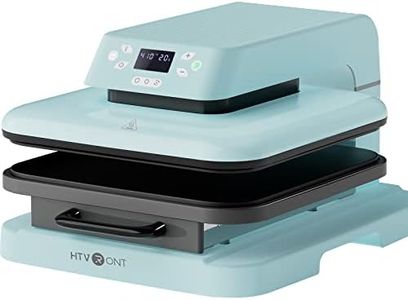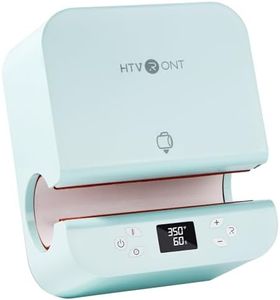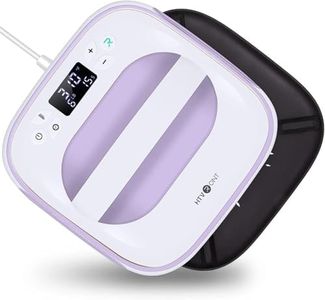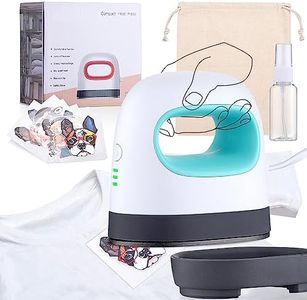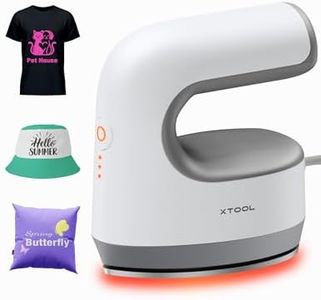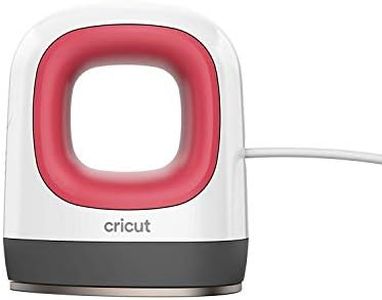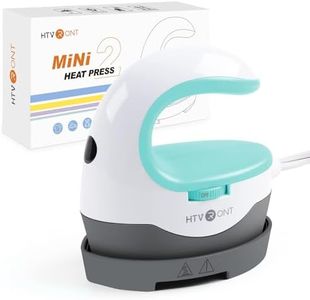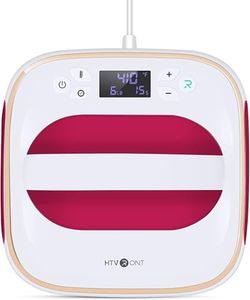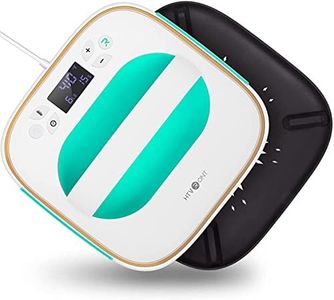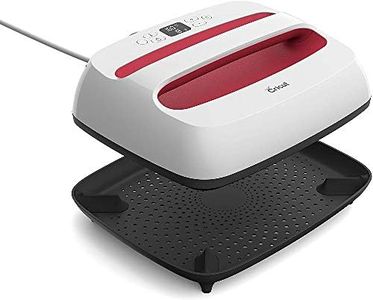We Use CookiesWe use cookies to enhance the security, performance,
functionality and for analytical and promotional activities. By continuing to browse this site you
are agreeing to our privacy policy
10 Best Heat Press Machines
From leading brands and best sellers available on the web.Buying Guide for the Best Heat Press Machines
Choosing the best heat press machine starts with understanding how you plan to use it. Heat press machines are popular tools for applying designs onto t-shirts, hats, mugs, plates, and more. To get the best results, you’ll want to focus on the main features that affect how easily you can use the machine, what types of projects it can handle, and the quality of your finished work. By thinking about the materials and items you want to work with, the frequency of use, and the amount of space you have available, you can narrow down your options and find a machine that truly fits your needs.Size of the Heat PressThe size of a heat press machine refers to the dimensions of its platen—the flat surface where you place your item to be pressed. This is important because a larger press can handle bigger designs and garments, while a smaller one is often more compact and easier to store. Heat press sizes generally range from small (9x12 inches), medium (15x15 inches), to large (16x20 inches or bigger). Small sizes are ideal for hobbyists working with baby clothes or small transfer designs, while medium and large sizes suit those pressing adult t-shirts, hoodies, or even bulk production. Choose the size based on the typical items and design sizes you expect to work with.
Type of Heat PressThere are several types of heat presses, mainly clamshell, swing-away, and drawer styles. The type determines how the top platen opens and how you access the pressing area. Clamshell models open like a book and are good for tight spaces and quick, simple jobs. Swing-away presses let the top part swing to the side, which makes it safer and easier to lay out your materials more precisely; these are useful for more detailed projects. Drawer types allow you to pull out the lower platen instead. Pick the type based on your workspace and the level of safety and accuracy you need for your projects.
Temperature and Time ControlsA heat press works by using precise heat and pressure, so being able to set and monitor the temperature and pressing time is crucial. Some machines feature digital controls for both, while simpler models may only have manual dials. Digital controls tend to offer more accuracy and are easier to use repeatedly. If you plan to work with different materials—like cotton, polyester, or specialty transfer papers—look for machines that allow exact settings. Consider your comfort with adjustments and how varied your projects might be.
Pressure AdjustmentPressure adjustment means how easily you can change how firmly the press clamps down on your material. Some presses have knobs or levers to adjust the pressure, which affects the quality of the transfer. This is important if you work with items of different thicknesses, like t-shirts versus hoodies or ceramic tiles. Being able to tweak the pressure helps ensure even transfers without burning or incomplete results. Select a model that lets you change the pressure if you’re planning on a mix of product types.
Versatility/AttachmentsSome heat press machines are designed for flat items only, while others come with or support attachments for mugs, hats, or plates. This versatility is great if you want to expand beyond just t-shirts. Swappable platens and compatible attachments mean one machine can handle many project types, but this can add to size and complexity. Think about whether you only want to do flat items or if you’d enjoy experimenting with other products before choosing a machine with more versatility.
Build Quality and Safety FeaturesA solid build ensures your machine will last and handle repeated use. Look for a sturdy frame, strong hinges, and good-quality handles. Safety features like auto-shutoff, heat-resistant handles, and clear warning labels make the press safer, especially if you’ll be working around children or in a shared space. If you plan to use the machine often or want something reliable for years, place a high value on build quality and safety features.


